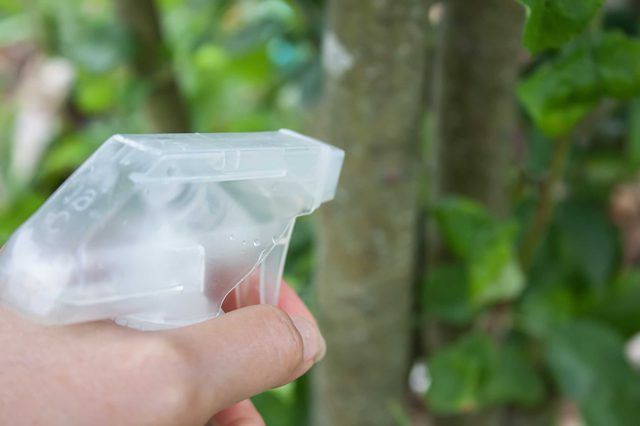Bulbs
Flower Basics
Flower Beds & Specialty Gardens
Flower Garden
Garden Furniture
Garden Gnomes
Garden Seeds
Garden Sheds
Garden Statues
Garden Tools & Supplies
Gardening Basics
Green & Organic
Groundcovers & Vines
Growing Annuals
Growing Basil
Growing Beans
Growing Berries
Growing Blueberries
Growing Cactus
Growing Corn
Growing Cotton
Growing Edibles
Growing Flowers
Growing Garlic
Growing Grapes
Growing Grass
Growing Herbs
Growing Jasmine
Growing Mint
Growing Mushrooms
Orchids
Growing Peanuts
Growing Perennials
Growing Plants
Growing Rosemary
Growing Roses
Growing Strawberries
Growing Sunflowers
Growing Thyme
Growing Tomatoes
Growing Tulips
Growing Vegetables
Herb Basics
Herb Garden
Indoor Growing
Landscaping Basics
Landscaping Patios
Landscaping Plants
Landscaping Shrubs
Landscaping Trees
Landscaping Walks & Pathways
Lawn Basics
Lawn Maintenance
Lawn Mowers
Lawn Ornaments
Lawn Planting
Lawn Tools
Outdoor Growing
Overall Landscape Planning
Pests, Weeds & Problems
Plant Basics
Rock Garden
Rose Garden
Shrubs
Soil
Specialty Gardens
Trees
Vegetable Garden
Yard Maintenance
How to Get Rid of the Little Red Spider Mites on Concrete
How to Get Rid of the Little Red Spider Mites on Concrete. Clover mites (*Bryobia praetiosa*) suck plant juices from annuals, perennials and grass, and then tend to migrate into the house for lower temperatures in late spring. They are tiny red to reddish brown spider mites that leave a red stain when crushed. Clover mites lay their eggs in various...
Clover mites (Bryobia praetiosa) suck plant juices from annuals, perennials and grass, and then tend to migrate into the house for lower temperatures in late spring. They are tiny red to reddish brown spider mites that leave a red stain when crushed. Clover mites lay their eggs in various places when the weather warms, including the cracks in concrete driveways, walls and sidewalks. You can get rid of them with minimal effort.
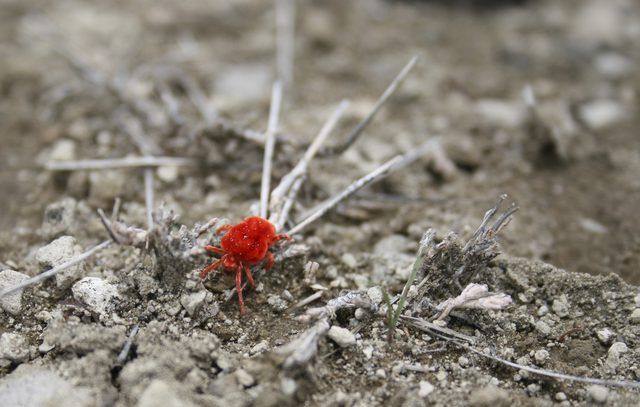
Spray the clover mites off the concrete and surrounding plants with a strong spray from a garden hose. Spraying them off the surrounding plants will help prevent more clover mites on the concrete. The tops and bottoms of the plants leaves should be sprayed as well as the stems. The water knocks them off the plants so they can no longer feed and often crushes them. Spray the plants in the morning. This gives the leaves time to dry before nightfall which will help prevent mildew. Spray the cracks and crevices of the concrete forcefully to dislodge any clover mites that may be hiding there. Repeat the process every three days until the clover mites are gone.
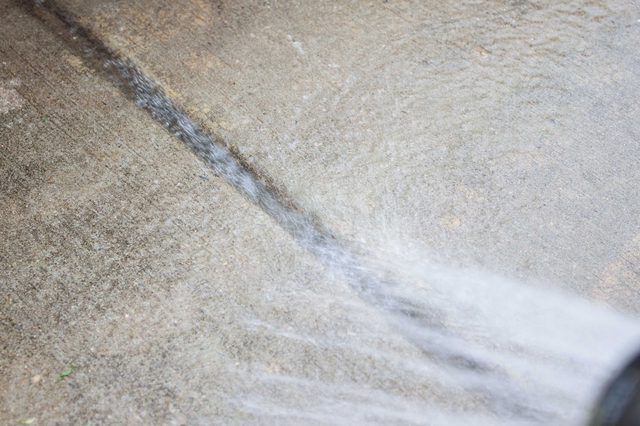
Spray the plants and concrete with insecticidal soap to smother the clover mites if water doesn't seem to get rid of them. Insecticidal soap is sold in concentrate and ready-to-use form at most garden centers. It can also be made using mild dish soap. Do not use heavy duty or concentrated dish soap or dishwasher soap as they can be harmful to plants. Mix the insecticidal soap concentrate or mild dish soap into water at the rate of 5 tablespoons in 1 gallon of water. Pour the solution into a hand-pump pressure sprayer. Spray the concrete and surrounding plants with the soap solution in the morning before temperatures rise above 80 degrees Fahrenheit. Thoroughly coat the tops and bottoms of the leaves as well as the stems of the plants. Reapply the soap solution every four to seven days until the clover mites are gone. Follow all label instructions, including wearing long sleeves, long pants and protective eyewear, if needed.
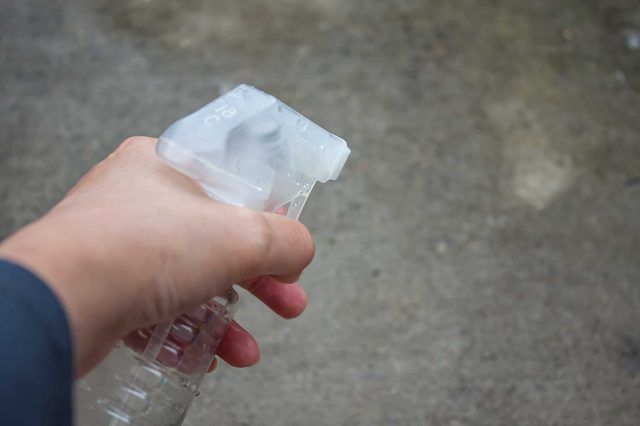
Leave insecticidal soap on the concrete and plants for no more than one to two hours. Rinse it off with a strong spray water from the garden hose. There is no benefit to leaving the soap on the plants or sidewalk. Insecticidal soap will only kill clover mites that are coated with it and leaving the soap solution on the plants can damage them.
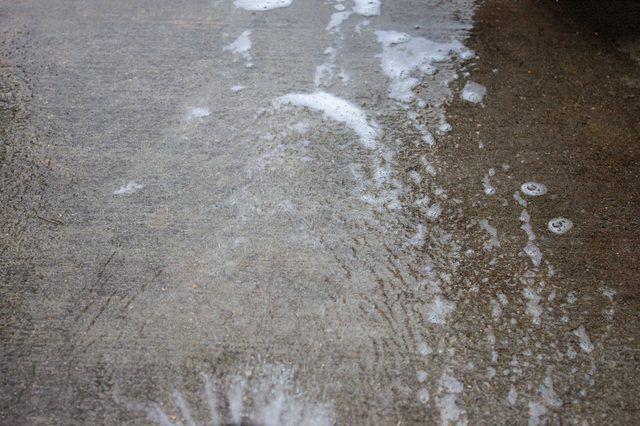
Reduce the likelihood of another clover mite infestation by killing the eggs with insecticidal soap in late spring or early summer. If the eggs are not killed, they will hatch in the fall when the weather cools and the infestation will begin again. Spray the concrete, building walls, tree trunks and any other nearby protected areas. The soapy solution can be washed off after one to two hours.
